October 27, 2014
Photos: These Sea Creatures Celebrate Halloween All Year with Their Spooky Names
BY: Brianna Elliott
As you probably know, the vast, deep ocean is home to rich amounts of biodiversity—much of which appears rather spooky and frightful, like anglerfish with their many sharp teeth, to the stargazer fish with eyes on top of their head. With some species, though, the fright isn’t in their looks but simply in their name—like the vampire squid or ghost shrimp.
With Halloween just around the corner, we’re taking a close look at marine animals that are able to celebrate Halloween all year long through their fear-invoking names. Take a look below to learn more about some ocean animals that are aptly prepared for the holiday this week.
Vampire Squid
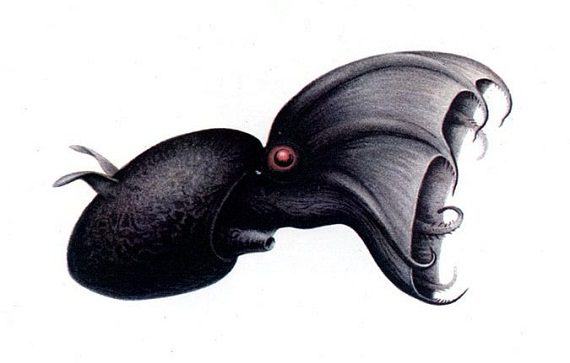
An illustration of a vampire squid (Vampyroteuthis infernalis). (Photo: Victordk / Wikimedia Commons)
The vampire squid is the only squid species that spends its entire life in dark, oxygen-poor deep ocean waters. This elusive species escapes predators by flashing photophores outlining its arms and fins, and ejects a bioluminescent mucus into the water before vanishing in a flash. Despite its name, this red-colored cephalopod isn’t exactly a fearsome predator of the deep; instead, it feeds on plankton, algae, and detritus, according to National Geographic.
Horned Puffin
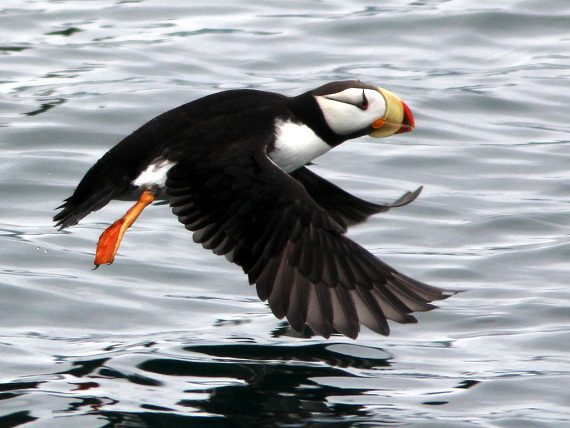
A horned puffin (Fratercula corniculata). (Photo: Audubon Pacific Flyway / Flickr Creative Commons)
The horned puffin—the least common of the puffin species—is found along the North American West Coast. Horned puffins hatch from their eggs with small, black “horn marks” above their eyes already visible, making them easily distinguishable from other puffin species. Their bills are large enough to fit several fish, making it easier for puffins to feed their young.
Ghost Crab
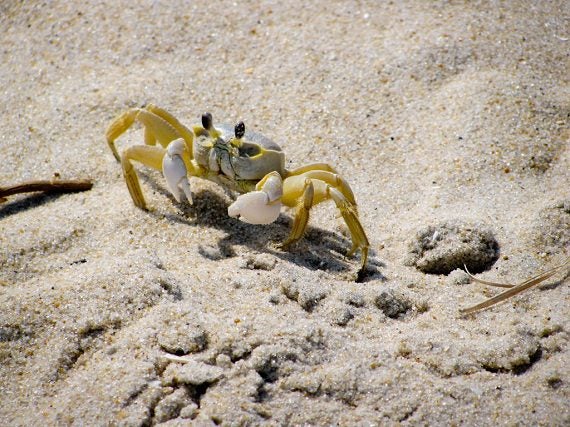
A ghost crab (Ocypode quadrata) on the Assateague Island National Seashore in Virginia. (Photo: National Park Service / Flickr Creative Commons)
Ghost crabs are aptly named for their abilities to camouflage with the sandy beaches and dunes that they inhabit. They’re capable of scurrying up to 10 miles per hour, able to quickly disappear from predators into burrows that can extend for four feet underground. They only feed on prey at night, which includes other crabs, clams, insects, vegetation, and more.
Goblin Shark
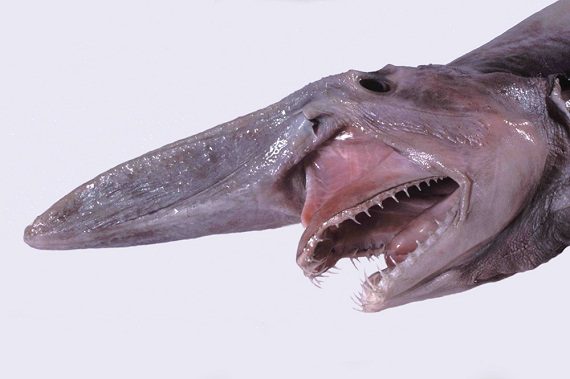
A goblin shark (Mitsukurina owstoni) head. (Photo: Dianne Bray / Museum Victoria / Wikimedia Commons)
With a flabby body, elongated and flattened snout, and gray-pink coloration, this deep-dwelling shark is incredibly unique looking. Goblin sharks can also protrude their snouts to reach out and grab prey, which is covered in electroreceptors to detect prey in dark waters. Mature goblin sharks that have been caught tend to be about 10 to 12 feet in length, though sightings have been rare.
Clown Anemonefish
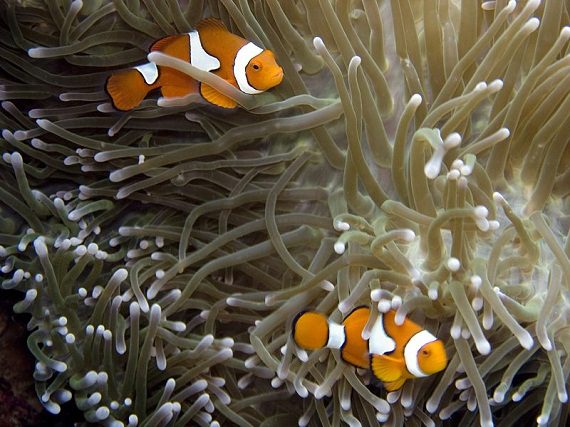
A clown anemonefish (Amphiprion percula) in waters off Papua New Guinea. (Photo: Jan Messersmith / Flickr Creative Commons)
Though many people are scared of clowns, this tiny fish is anything but scary. Out of the 30 species of clownfish, the two most widely known are the orange clownfish (Amphiprion percula) and the ocellaris clownfish (Amphiprion ocellaris). They have mutualistic relationships with anemones, but are able to avoid their dangerous stings because of a special mucus they secrete. They can grow up to about four inches long, says National Geographic.
Zombie Worm
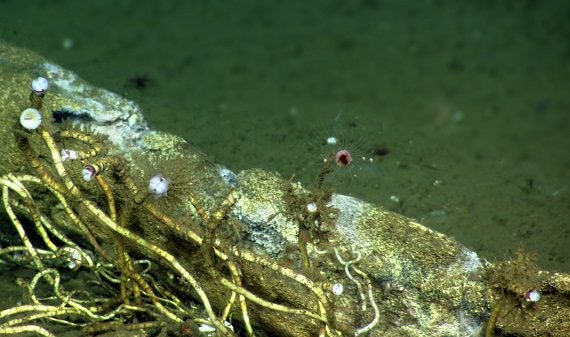
Zombie worms, also called boneworms, are pictured growing out of whale bones. (Photo: Neptune Canada / Flickr Creative Commons)
This species’ behavior does partially live up to its name: They have been discovered living and feeding off of dead whale bones—as well as dead fish bones and rotting cow bones—along the sea floor at depths up to 10,000 feet. They digest fats within the bone by secreting an acid from their skin, since they lack mouths and stomachs, says the Smithsonian Ocean Portal. Additionally, it’s only the much-larger females that feed on bones—the males actually live inside females!
Be sure to follow Oceana’s blog throughout the week for more creepy critter coverage!



